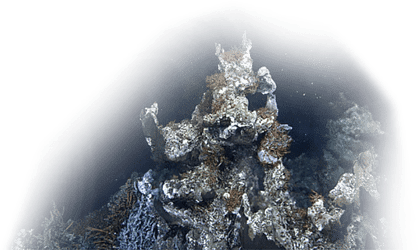NEWS RELEASE
Alerts
SHOWING 5 RESULTS
Showing matches for "Solid Carbon"
Rock solid climate solutions: Negative emissions technology
Overview
Gigatons of carbon dioxide able to be stored in ocean basalt
Overview
NEWS RELEASE
From greenhouse gas to rock in 25 years
Overview
NEWS RELEASE
Newly published research by scientists with the Solid Carbon project shows that carbon dioxide (CO2) taken from the atmosphere and injected into the deep subseafloor off Vancouver Island may turn into solid rock in about 25 years.
Solid Carbon, an international research team led by Ocean Networks Canada (ONC), a University of Victoria initiative, and funded by a PICS Theme Partnership grant from the Pacific Institute for Climate Solutions, hosted and led by UVic, is investigating how to permanently and safely sequester CO2 as rock in the ocean floor.
The project is part of the emerging field of negative emissions technologies—climate solutions that reduce the amount of carbon in the earth’s atmosphere.
Earthquake risk minimal when storing carbon under the deep ocean, study finds
Overview
NEWS RELEASE
Injecting carbon dioxide (CO2) into ocean basalt has almost no risk of triggering any seismic activity such as earthquakes or fault slip according to new research from [Solid Carbon](https://solidcarbon.ca/), a promising climate change mitigation project for reducing the amount of carbon in the Earth’s atmosphere.
Advanced computer modelling by scientists with the Solid Carbon team shows injecting CO2 under the Cascadia Basin has less than 1 percent chance of causing fault slip.
Solid Carbon, an international research team led by Ocean Networks Canada (ONC), a University of Victoria (UVic) initiative, and funded by the Pacific Institute for Climate Solutions, is investigating how to permanently and safely store CO2 below the ocean floor. The goal is to capture CO2 from the atmosphere and inject it into young (less than 15 million years old) porous basalt rock, such as that found in the Cascadia Basin off the west coast of Canada, where it would interact with minerals, transforming into carbonate rock.
Solid Carbon receiving $24M to advance ocean-based carbon dioxide removal
Overview
NEWS RELEASE
The University of Victoria (UVic) welcomes today’s announcement of $24-million over six years through the Government of Canada’s New Frontiers in Research Fund (NFRF) to advance the Solid Carbon research project—one of the most promising ocean-based carbon dioxide removal (CDR) initiatives of the modern era to combat the climate crisis.
The *Solid Carbon: The Ocean’s Rock-solid Sociotechnical Climate Solution* was among six initiatives [awarded funding under the NFRF’s Transformation stream](https://www.canada.ca/en/research-coordinating-committee/news/2025/03/canada-continues-to-invest-to-advance-research-and-innovation-projects-across-the-country.html), which supports large-scale Canadian-led interdisciplinary research with the potential to realize real and lasting change for major challenges.
Kate Moran is the project’s principal investigator and president and chief executive officer of Ocean Networks Canada, a UVic initiative. Moran says “as a pivotal driver of scientific innovation, Solid Carbon has the potential to leverage the world’s largest reservoir for carbon dioxide sequestration, ocean basalt, to combat the climate crisis and lay the foundation for a Canadian-led sustainable solution.”
Ocean basalt has a unique capacity to address current increasing emission levels by permanently and safely storing carbon dioxide (CO2) in the sub-seafloor as rock. Basalt is found all over the world’s ocean floor and reacts with CO2 to mineralize, over short periods of time.
Stay up to date with ONC
Subscribe

Ocean-Climate Building University of Victoria
#100, 2474 Arbutus Road, Victoria, BC, Canada, V8N 1V8
info@oceannetworks.ca+1 (250) 472-5400Marine Technology Centre University of Victoria
#106, 9865 West Saanich Road, North Saanich, BC, Canada, V8L 5Y8
info@oceannetworks.ca+1 (250) 472-5400@ 2025 Ocean Networks Canada. All rights reserved.